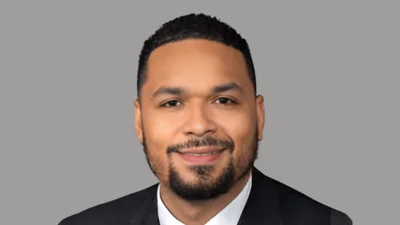Walter “Ted” Carter Jr. President at Ohio State University | Official website
Walter “Ted” Carter Jr. President at Ohio State University | Official website
Since the mid-air collision between American Airlines flight 5342 and a U.S. Army helicopter in Washington, D.C., earlier this month, Shawn Pruchnicki has been actively engaging with over 40 media outlets to provide insights into the incident.
Pruchnicki, an assistant professor at The Ohio State University's Center for Aviation Studies, has a diverse background that includes experience as a commercial airline pilot, pharmacist, firefighter, and accident investigator. His primary message during these interviews is clear: avoid speculation.
“As we say in the accident investigation business, ‘Don’t fall in love with a theory,’” Pruchnicki emphasized. He explained that while initial observations at an accident site might suggest obvious causes, investigators must remain objective to uncover the truth.
Pruchnicki's commitment to objectivity has made him a sought-after expert on television worldwide. “One of the reasons I do as much media work as I do is to keep one more person off the air from [speculating],” he stated.
In his role as an investigator, Pruchnicki likens his work to detective work. In this particular case, crucial data from both aircraft have been recovered from the flight data recorder (FDR) and cockpit voice recorder (CVR), commonly referred to as "black boxes."
“[The FDR] shows us exactly what the plane was doing,” he noted. It records essential parameters such as engine status, pitch, airspeed, altitude, and thrust every few seconds. This information provides valuable insights into the mechanical aspects of the flight.
The CVR captures everything happening in the cockpit but may not always be helpful if accidents occur rapidly. However, any discussions or maneuvers recorded can prove invaluable for investigators.
“What’s really going to be interesting is the discussion in the helicopter,” Pruchnicki remarked. He suggested that conversations captured there could shed light on how the crash occurred.
He also highlighted potential factors contributing to such incidents. Blind spots in aircraft and lighting conditions at night can make it challenging for pilots to detect other vehicles nearby.
“There are blind spots in airplanes, just like in your car,” he explained. Additionally, lights can cause confusion at night when identifying approaching aircraft.
Pruchnicki acknowledged that aviation experts have long been concerned about mid-air collisions due to rising close calls and a shortage of air traffic controllers. On the day of this crash at Reagan Airport—a complex facility—one controller was managing two radio frequencies instead of two people handling them separately.
“I feel so bad for that controller,” he expressed sympathy for those involved under challenging circumstances.
Despite these concerns following this tragedy—where safety margins have eroded somewhat—Pruchnicki maintains confidence in air travel safety systems provided by organizations like Federal Aviation Administration (FAA). He continues flying regularly with his family because he believes there remains sufficient margin ensuring safe travels overall despite recent events serving as wake-up calls within industry circles globally today!
In conclusion: Investigators will meticulously analyze all available data post-collision—not only aiming towards preventing future occurrences but also offering closure victims' families deserve after such tragic incidents unfold unexpectedly across skies worldwide each year alike...
“Who is going speak dead?” asked rhetorically before adding poignantly: “They’ve been silenced forever… Who’s figure out them? Deserve someone get bottom happened… Not forgotten.”





 Alerts Sign-up
Alerts Sign-up